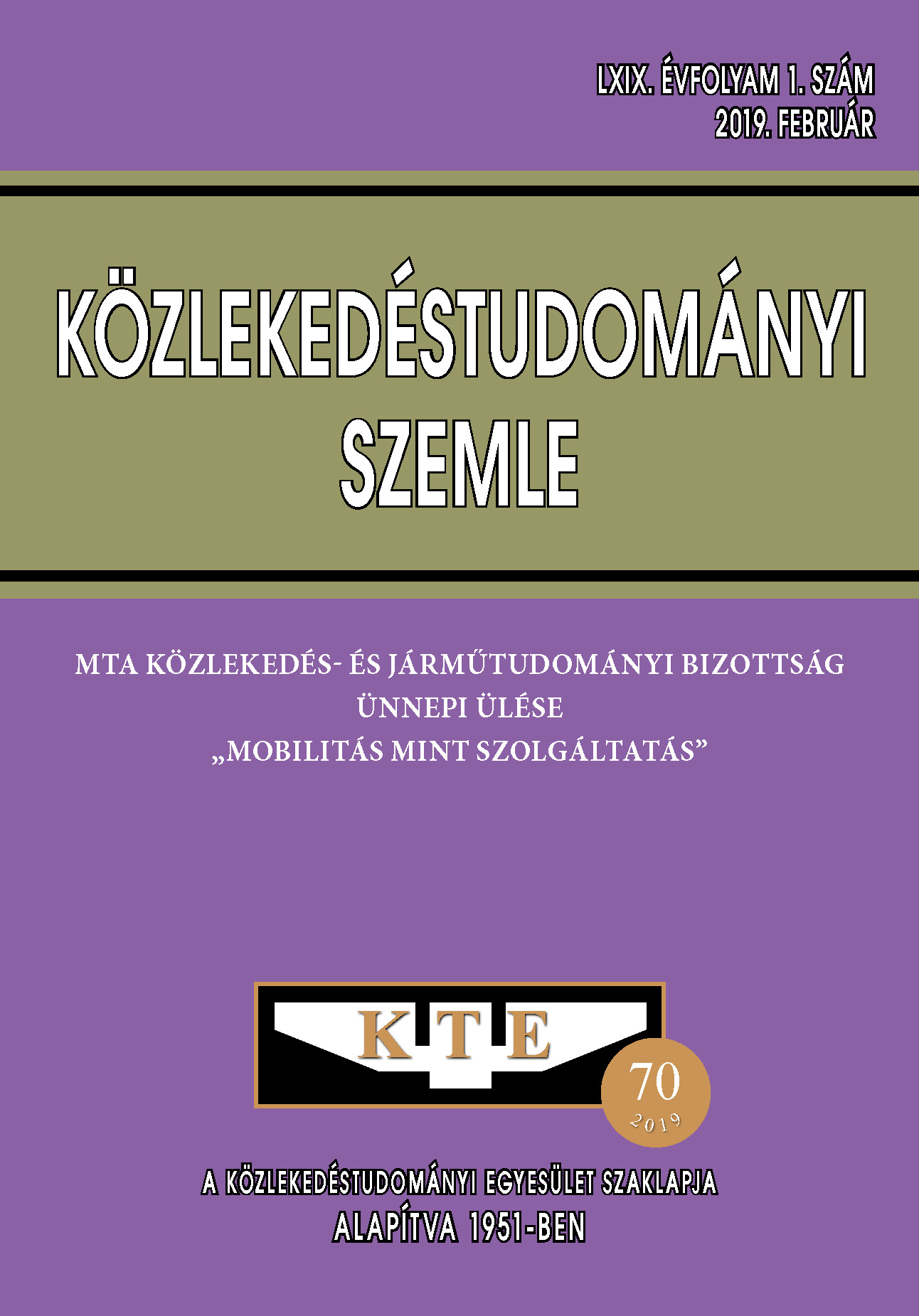Possible application of new business models in the mobility service
Abstract
The Mobility-as-as-Service fills in the gap between the markets of individual and public transportation. Its dynamic market growing is led by the information-technology sector’s inventions, the more and more open access to mobility data and information, and the incresing importance to gain social benefits. Exploiting the advantages of mobility services has strict preconditions: win the trust of users, but moreover, of the whole society towards information-technology solutions, and gain users over using these mobility services. The service provision needs new and novel operational and business models, where both the public and/or private stakeholders can play a part within. Although, the two stakeholder groups have different interests, but these special market let involve both of them, where the goals are common: better exploitation of existing resources, while reducing social burdens.
References
Bencsik Andrea, Juhász Tímea (2016) Szervezeti bizalom és bizalmatlanság a sharing economy szellemében. Logisztika – Informatika – Menedzsment (LIM 2016) Nemzetközi Tudományos Konferencia. Zalaegerszeg, Magyarország: 2016.12.08-2016.12.09.
Sampo Hietanen (2018) The Business Model of Mobility as a Service (MaaS). MaaS Global, 2018.06.11.
Warwick Goodall, Tiffany Dovey Fishman, Justine Bornstein, Brett Bonthron (2017) The rise of mobility as a service – Reshaping how urbanites get around. Deloitte Review, Issue 20, 2017.
Aki Aapaoja, Jenni Eckhardt, Lasse Nykanen (2017) Business models for MaaS. ICoMaaS 2017 Conference Proceedings, 2017., pp 8-20.
Eckhardt, J., Aapaoja, A. (2016). In: König, D., Eckhardt, J., Aapaoja, A., Sochor, J. & Karlsson, M. (2016). Deliverable 3: Business and operator models for MaaS.
Kamargianni, M., M. Matyas (2017) The Business Ecosystem of Mobility as a Service. 96th Transportation Research Board (TRB) Annual Meeting, Washington DC, 8-12, January 2017.
Thijs Van den Brande (2017) Impact of data on the transport sector? Future business models for Mobility as a Service (MaaS). Master’s dissertation. Ghent University, Dept. of Information Technology, June 2017.
Articles published electronically are open access (OJS), freely available online and can be downloaded. Authors of articles are not charged any publication or publishing costs (APC). Users have the right to read, download, copy, print, and search the articles, or share the full text with a link.
Authors must declare that their submission has not been previously published in another journal, that financial support has been acknowledged, and that the list of references is complete and accurate, including specification of URLs and DOIs (if available). When submitting a draft article, each author approves the submitted version. Authors guarantee that the article is their original work. Authors are required to participate in the peer review process, follow the advice of reviewers, meet the prescribed deadlines, and, if any, withdraw the submission or correct errors.
All submitted articles are subject to peer review, where the editors request an independent evaluation from at least one expert, ensuring that the reviewer(s) have no conflicts of interest with the authors. The final decision is made by the Editor-in-Chief, who takes into account the evaluations and the suggestions of the editors. The editors and reviewers treat the submission confidentially.
The publisher and editors are committed to maintaining high ethical standards and to preventing publications that involve research misconduct. They follow the COPE guidelines on such ethical issues.
The authors retain copyright and grant the journal the right of first publication under the Creative Commons License (https://creativecommons.org/licenses/by-nc-nd/4.0), which allows others to share the work, while acknowledging the authorship of the work and the first publication in the journal.
The journal archives all published articles, and the journal's owner, the Hungarian Society of Transportation Sciences, will continue to operate the database even if the journal ceases to be published.















